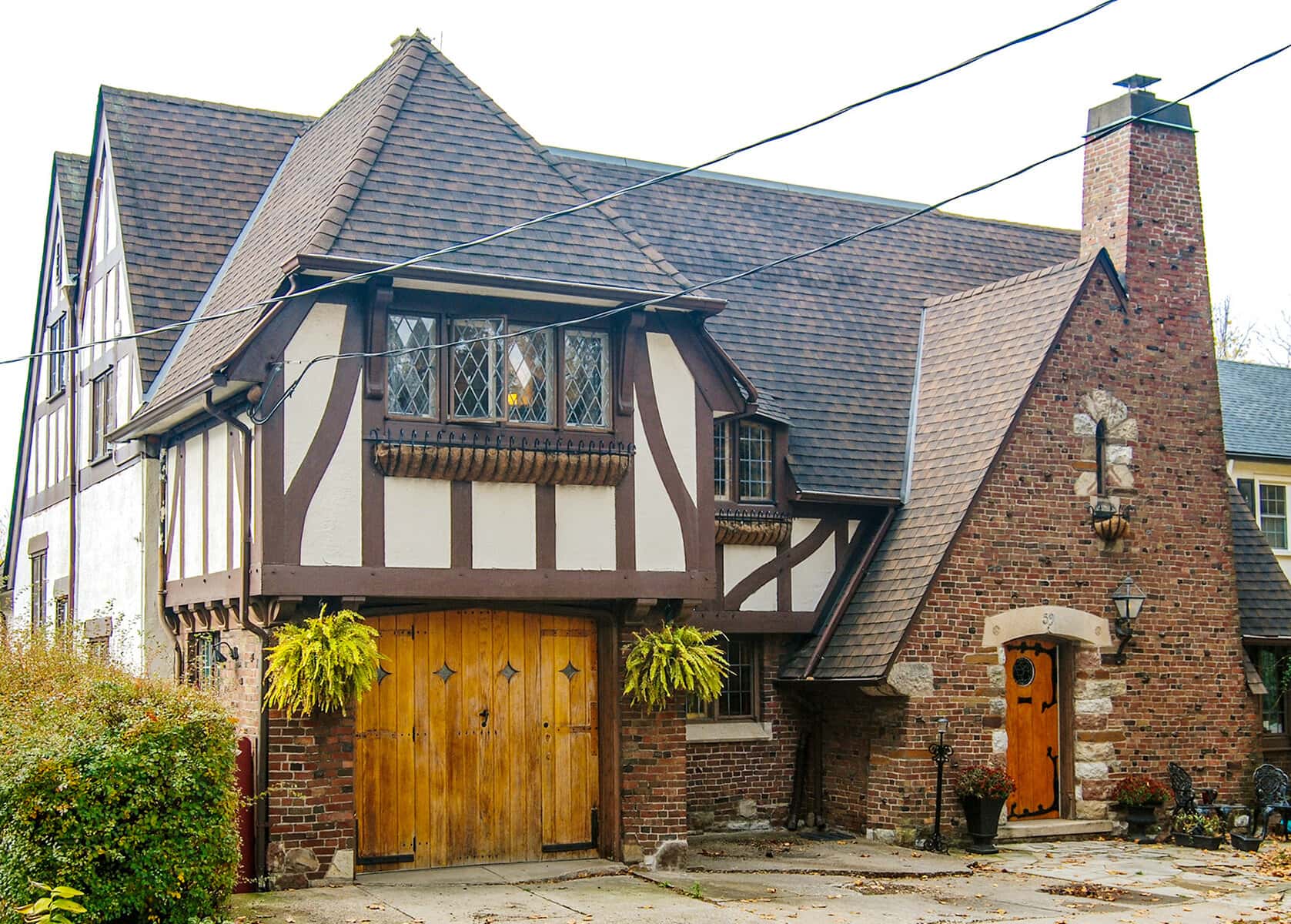In last week’s column we looked at the Canada-centric expression of Edwardian Classicism.
In that article, it was mentioned that during the latter part of the 19th century, “there was growing disaffection with what was seen as the excesses of high society. This general disaffection spurred new intellectual and artistic thought. In England, architects responded with two main and divergent schools of design, the first being Arts and Crafts, while the second was a return to classicism (principally English baroque).”
Now, since the impact of classicism on the built landscape of our region has been explored, it is only appropriate that an equal visit to the other architectural school – Arts and Crafts – is undertaken.
To begin, we must start with John Ruskin’s 1851 treatise entitled “The Stones of Venice,” which was written immediately after Prince Albert’s Great Exhibition at the Crystal Palace showcasing the “marvels” of the British Industrial Revolution.
Ruskin, recognized as England’s most influential art critic of that time, saw this as a celebration of the societal pressures that had directed the dehumanization of art and design through mass-produced decorative products, curtailing both individual creativity and artistic craftsmanship.
He wrote “The Stones of Venice” as a contrast and repudiation of what he viewed as the Industrial Revolution’s boring crass materialism, with the artistic brilliance of artifacts produced during the apex of Venetian power.
The central tenets he espoused – that expressions of morality, art and nature were both intrinsically linked and completely dependent upon the mind, heart and craftsmanship of the unfettered and fully-trained artisan for full expression – resonated deeply with a radical group of English artists known as the Raphaelites.
While the Raphaelites may have formed the core adherents to Ruskin’s treatise, it was not one of them who would convert these theories from words on paper into a movement that would impact the societies of the United Kingdom, the United States and Canada.
It was William Morris, who took Ruskin’s philosophical tenets and translated them into the principles of the Arts and Crafts movement.
He was the primary driving force in establishing fine hand-wrought craftsmanship as being central to the movement.
It was he who established the medieval-styled guilds to produce high-quality, extremely successful furniture, stained glass, wall paper and textiles (often his own designs).
And it was Morris, in 1859, who commissioned the architect Phillip Webb to develop a residential house based on Arts and Crafts principles.
Webb drew upon the informal, nonclassical forms and elements of England’s medieval vernacular architecture filtered through the 19th-century lifestyle imperatives for the overall design.
Completed in 1860, it was a collaborative effort between Webb and Morris – a two-storey red brick dwelling with a high pitched red tile roof and tall chimneys.
It was set within a garden designed specifically to integrate the house into the landscape while the interior, largely designed by Morris himself, celebrated craftsmanship and unique artistry.
Now, while it embodied the tenets of Arts and Crafts, its simple, almost severe exterior presentation was viewed as radical by people used to the heavily ornamented styles of the time.
In fact, it fell to a later architect, Sir Edwin Lutyens, working in association with the brilliant landscape designs of Gertrude Jekyll, to develop the guiding design parameters for the Arts and Crafts architectural style.
These are parameters Charles Voysey would use to create the wildly popular English Cottage expression that would fuel the transport of Arts and Crafts architecture to North America.
In the United States, the idealization of the medieval in Arts and Crafts, as expressed by the English Cottage, simply didn’t resonate with the prevailing sociopolitical ethos of the republic.
Instead, American proponents of Arts and Crafts focused on craftsmanship and use of local materials within a loose variety of individual designs.
In fact, it wasn’t until the Greene Brothers of California developed the Craftsman interpretation that the Arts and Crafts style truly took off in the U.S.
Naturally, because of our close geographic association with the States, it was inevitable that the comparatively “cheap and cheerful” Craftsman interpretation would be imported and find popularity in Canada (see the Arch-i-text column “The NOTL craftsman” from June 23, 2022 for Niagara-on-the-Lake examples).
However, unlike in the U.S., the English Cottage expression had its own adherents amongst the general public and Canadian architects.
Perhaps foremost amongst these Canadian architects was the Niagara-based team of Arthur Nicholson and Robert MacBeth who, together between 1921 and 1931, created series of brilliant Arts and Crafts homes.
Arthur Nicholson, the son of an American immigrant to Canada, was admitted to the Ontario Association of Architects in 1905 and set up practice in his “hometown” becoming rapidly recognized for his talented classicist based designs.
Robert MacBeth, an architect in Scotland, immigrated to Canada during the second decade of the 20th Century and found a position as a draftsman in Nicholson’s firm.
After spending a couple of years in this lowly position, MacBeth moved to a firm in Toronto, but was very shortly drawn back to Niagara by an offer of partnership with Nicholson.
In 1921, the firm of Nicholson & MacBeth was established and the creative synergy between these two men was nothing short of remarkable.
That both men were highly gifted is undeniable, but studying the individual works of each, it can be suggested that Nicholson was inclined to be conservative in his designs while MacBeth was strongly inclined to push the boundaries of creative expression.
However, in the short decade of their partnership, it was the forged balance between their creative motivations, grounded in English Arts and Crafts, which resulted in an incredible architectural legacy.
Unfortunately, there are no verified surviving Nicholson & MacBeth designs in Niagara-on-the-Lake; both the original Laura Secord school building and Greystone Manor in Queenston were pure Nicholson designs developed prior to 1921.
That said, one doesn’t have to go too far to bear witness to their stellar Arts and Crafts designs.
St. Catharines’ Old Glen Ridge is replete with both the work of Nicholson individually and the partnership’s expressions – the finest example of the latter being at 30 Glenridge Ave..
The Yates Historic District is a virtual treasure trove of their brilliant Arts and Crafts expressions – most notably, the Taylor House at 23 Yates St., the Riddle House at 52 Yates St. (including rear semi’s at 19 & 21 Norris Pl.) and the Horton House at 59 Yates St..
There are 77 verified Nicholson & MacBeth survivors in Niagara which can be found in St. Catharines, Port Dalhousie, Welland and Port Colborne – each an Arts and Crafts marvel gracing the built Canadian landscape.










